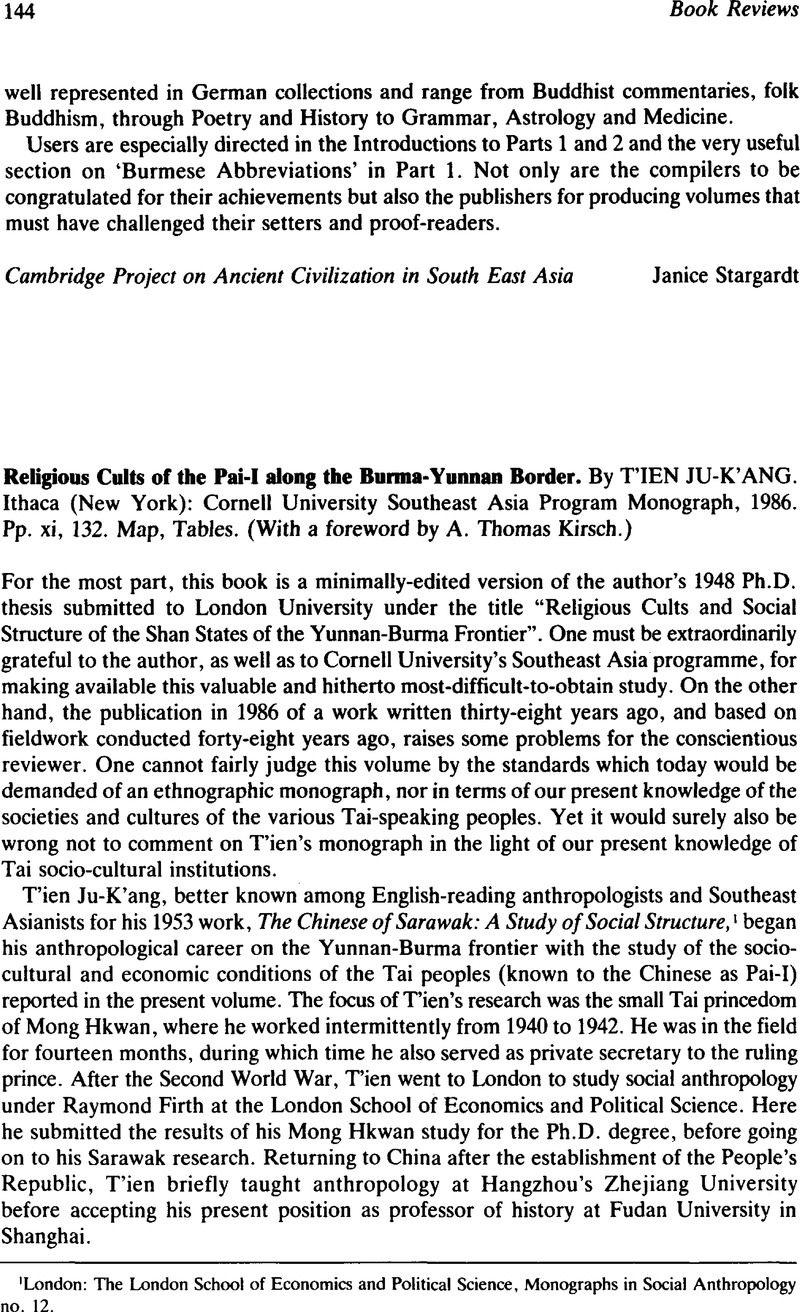Published online by Cambridge University Press: 07 April 2011

1 London: The London School of Economics and Political Science, Monographs in Social Anthropology no. 12.
2 Moerman, Michael, Agricultural Change and Peasant Choice in a Thai Village (Berkeley and Los Angeles: University of California Press, 1969).Google Scholar
3 See, for example, William Clifton Dodd (Cedar Rapids, Iowa: The Torch Press, 1923), p. 171; Jen, Chang Chi, “The Minority Groups of Yunnan and Chinese Political Expansion into Southeast Asia” (Ph.D. dissertation. University of Michigan, 1956), pp. 45–46Google Scholar ; LeBaretal, Frank M., Ethnic Groups of Mainland Southeast Asia (New Haven: Human Relations Area Files Press, 1964), p. 191Google Scholar.
4 For comparative data on the relationship between Buddhism and animism among Tai peoples, see, for example, Tambiah, S.J., Buddhism and the Spirit Cults in Northeast Thailand (Cambridge: Cambridge University Press, 1970)Google Scholar; Terwiel, B.J., Monks and Magic: An Analysis of Religious Ceremonies in Central Thailand (London: Curzon Press for the Scandinavian Institute of Asian Studies, Monograph Series no. 24, 1975)Google Scholar; Davis, Richard B., Muang Metaphysics: A Study of Northern Thai Myth and Ritual (Bangkok: Pandora, 1984)Google Scholar: Wijeyewardene, Gehan, Place and Emotion in Northern Thai Ritual Behaviour (Bangkok: Pandora, 1986)Google Scholar.